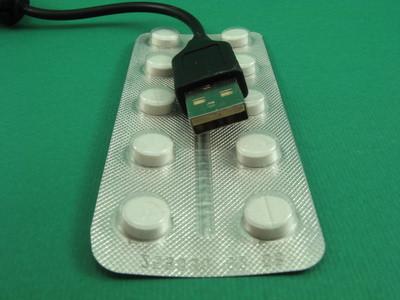March 9

Anti Virus 1 è un programma antivirus falso che si installa sul computer e continuamente si avverte che il software dannoso ha infettato il computer. Anti Virus 1 può rallentare il computer in modo sostanziale e continuo molestare voi durante il tentativo di fare i compiti normali. Per rimuovere efficacemente Anti Virus 1 dal computer, è necessario rimuovere i file di chiave e valori di registro dal computer.
1 Riavviare il computer in modalità provvisoria ripetutamente toccando il tasto "F8", mentre il computer si sta avviando. Selezionare "Modalità provvisoria con rete" e premere "Invio".
2 Fare clic su "Start" e selezionare "Computer" (Windows Vista e Windows 7) o "Risorse del computer" (Windows XP). Clicca su "C:" drive e passare ai seguenti file:
C: \ Documents and Settings \ All Users \ Dati applicazioni \ AV1
C: \ Documents and Settings \ All Users \ Menu Avvio \ Programmi \ Anti-Virus-1
C: \ Documents and Settings \ All Users \ Dati applicazioni \ AV1 \ AV1.cab
C: \ Documents and Settings \ All Users \ Dati applicazioni \ AV1 \ av1.exe
C: \ Documents and Settings \ All Users \ Dati applicazioni \ AV1 \ AV1i.exe
C: \ Documents and Settings \ All Users \ Dati applicazioni \ AV1 \ AV1i2.exe
C: \ Documents and Settings \ All Users \ Dati applicazioni \ AV1 \ QWProtect.dll
C: \ Documents and Settings \ All Users \ Dati applicazioni \ AV1 \ svchost.exe
C: \ Documents and Settings \ All Users \ Desktop \ Anti-Virus-1.lnk
C: \ Documents and Settings \ All Users \ Menu Avvio \ Programmi \ Anti-Virus-1 \ Anti-Virus-1.lnk
C: \ Documents and Settings \ All Users \ Menu Avvio \ Programmi \ Anti-Virus-1 \ Uninstall.lnk
Evidenziare ogni file e premere il tasto "Elimina" per rimuoverlo dal computer.
3 Fare clic su "Start" e cliccare su "Esegui". Digitare "regedit" e fare clic su "OK". Si noti che si può semplicemente digitare "regedit" nella barra di ricerca su Windows Vista e Windows 7.
4 Clicca sulle icone "più" accanto alle voci a sinistra per sfogliare il registro di Windows. Individuare i seguenti valori:
HKEY_CURRENT_USER \ Software \ AV1
HKEY_CURRENT_USER \ Software \ AV1 \ AV1 {F275E931-AFEC-4f70-B0D4-CC2731B945E0}
HKEY_CLASSES_ROOT \ AppID {29256442-2C14-48CA-B756-3EE0F8BDC774}
HKEY_CLASSES_ROOT \ AppID \ QWProtect.DLL
HKEY_CLASSES_ROOT \ CLSID {70FEAD04-A7FD-4B89-B814-8A8251C90EF7}
HKEY_CLASSES_ROOT \ Interface {051C9A06-FB08-486F-B09B-8B33B261637D}
HKEY_CLASSES_ROOT \ QWProtect.QWProtectBHO
HKEY_CLASSES_ROOT \ TypeLib {512E801E-2F02-4ADE-ACAA-58F08A22B2F8}
HKEY_LOCAL_MACHINE \ SOFTWARE \ Microsoft \ Windows \ CurrentVersion \ Explorer \ Browser Helper Objects {70FEAD04-A7FD-4B89-B814-8A8251C90EF7}
HKEY_LOCAL_MACHINE \ SOFTWARE \ Microsoft \ Windows \ CurrentVersion \ Run "calibrazione del monitor"
Fare clic con ciascuno dei valori e selezionare "Elimina".
5 Scaricare e installare il software di rimozione malware. Scansione tutte le unità e le cartelle di software dannoso. Eliminare i file trovati, una volta che la scansione è completata. Ripetere questa operazione fino a quando il programma non trova più il software dannoso sul computer. Riavviare il computer in modalità normale.
